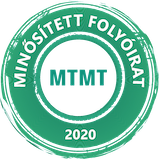A kognitív térkép és a névhasználat
Absztrakt
The cognitive map and the use of names
In this paper, the author attempts to provide a general summary of the relationship between the cognitive map and spatial concepts on the one hand, and between the onomasticon related to the cognitive map and discourses about space on the other hand, focusing on universal as well as culturally specific features. To this end, the author summarizes and interprets all the relevant results of national and international research from the areas of geography, socio-geography, anthropology, psychology, socio-onomastics and cognitive linguistics. Space is made up of different places and their relationships, which are represented on the cognitive map. At the same time, the development of the cognitive map is governed by many factors. In addition to one’s own experiences of the geographical environment. A significant proportion of geographic knowledge also results from different sources or from a combination of sources. In this context, the linguistic-cultural background also influences the individual’s geographical concepts and spatial cognition. At the same time, there are general features, organizing principles in spatial cognition resulting from the mechanisms of cognition, which influence the development of the mental map and name-giving practices as well. A good example is that one can only define a place in relation to another place, and this relation is often reflected in place names. Closely connected to this, is the view of centre-periphery relations in space, which is often manifested in discourse about places and sometimes in the meanings of place names, as well. The connotative meaning attached to words can also be mentioned as a common feature, and this is present both in the organization of discourse about space and in place names. These interrelated principles may apply in different ways to different areas, communities and cultures.




